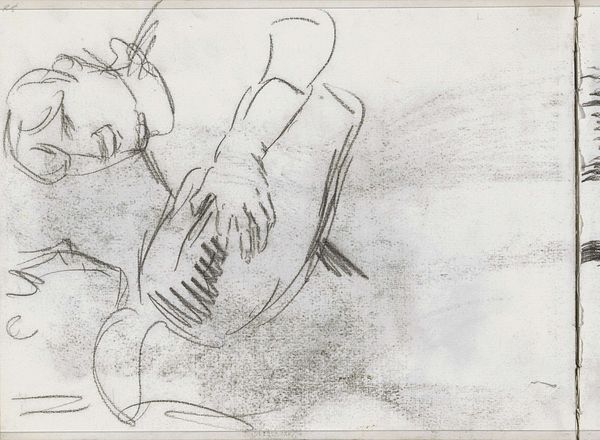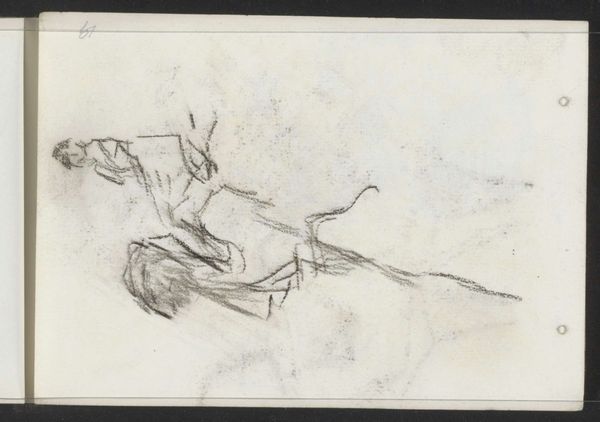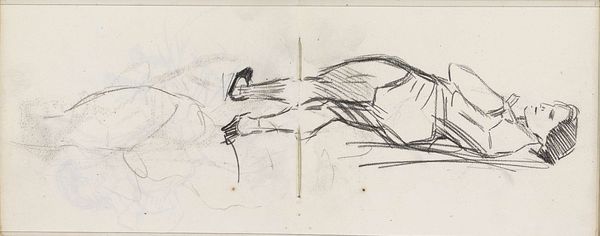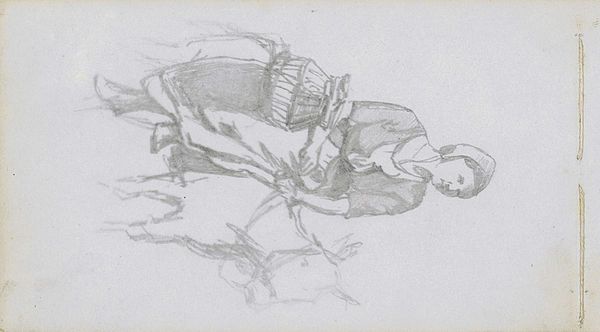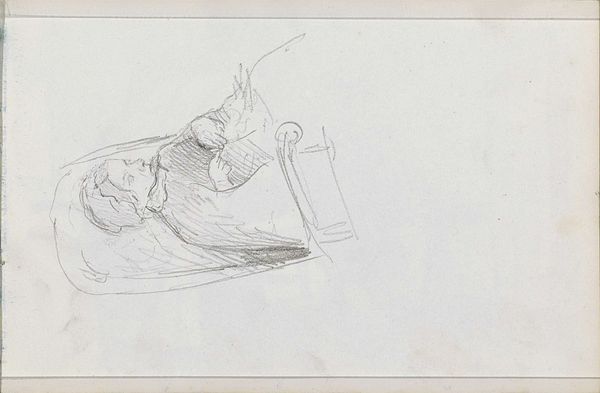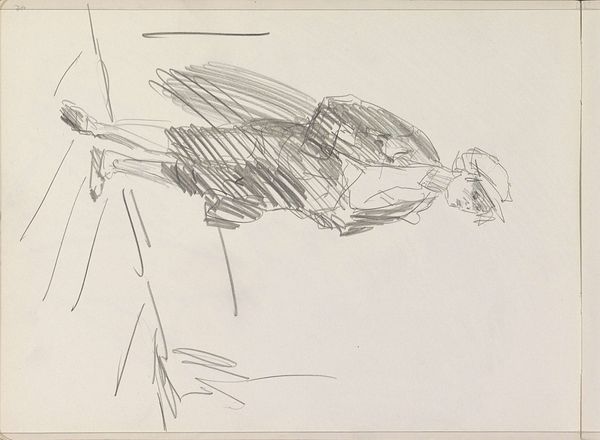
drawing, paper, pencil
#
portrait
#
drawing
#
figuration
#
paper
#
pencil
Copyright: Rijks Museum: Open Domain
Curator: Looking at Isaac Israels' sketch "Standing Woman, Looking Down," I am struck by the seemingly nonchalant rendering of such a complex subject, the social position of women in society. Editor: There’s an undeniable weight to her posture, almost bowed. Her downcast gaze makes me feel uneasy. You get the sense of submission. I wonder what her position was as Israels portrayed her, the work feels melancholic to me. Curator: Indeed, her very posture conveys a sense of resignation. Here we have Israels deploying a humble pencil on paper. The visible strokes and erasures show his artistic process, his labor, which should encourage viewers to ponder about this drawing as a form of craft as much as "art". Editor: The choice of pencil is interesting. Graphite allows for such nuance of shading and texture. Is that shading emphasizing, perhaps, the fabrics that shape and perhaps constrain the body within? Think of women’s lives constrained and dictated during this period… what’s the impact for her? Curator: Absolutely. Her attire subtly reflects her societal role. Israels created this piece sometime between 1875 and 1934, a transformative era when debates around class and gender roles raged intensely. Her clothes, clearly well-made even if simply rendered, denote her economic status and perhaps also her role in either participating or not, in those discussions. Editor: It's her downcast gaze though, and her slightly stooped position that keeps drawing me back to this sketch, it forces you to reflect on this artwork’s narrative from the perspective of power. Whose gaze do we usually not see acknowledged in this position, but often only on the other side? Curator: I think the very act of portraying a standing, yet defeated looking, woman is also a subtle act of rebellion against idealized portraits, which speaks volumes. His emphasis on the reality of her situation – however ambiguous, challenges us to think about women's experiences across the eras. Editor: Definitely, and it highlights how certain visual tools could become instruments of subtle subversion, and, now that I see this drawing in our museum, “Standing Woman, Looking Down” becomes an act of protest. Curator: So the method and materials Israels employs offer insights into how art embodies meaning through choices reflecting social context and even potentially artistic intervention. Editor: An unexpectedly intimate and very thoughtful social commentary captured with such an "economic" instrument, which invites more nuanced analyses, as time passes and social and political climates keep shaping our critical perspective.
Comments
No comments
Be the first to comment and join the conversation on the ultimate creative platform.


